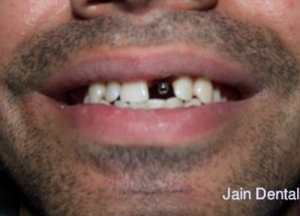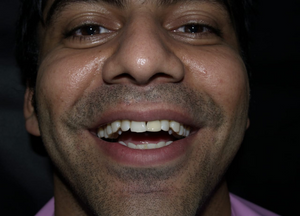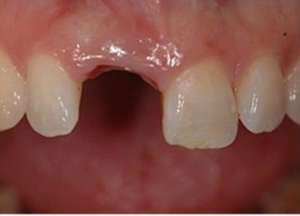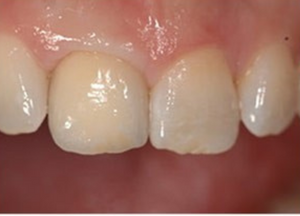
Gum disease is caused by the bacteria which infects the tissues and may decay the bone also. The primary reason for bacteria to grow is poor oral hygiene. Bacteria forms plaque and subsequently Tartar, which needs to be cleaned off. It causes the gums to be tender, swollen red and gums may bleed also. X-ray is taken to establish the extent of bone loss if any. The plaque, tartar and infected issues may be cleaned with scaling and root planning by dental instruments or laser gun may be used. In advanced cases surgery is performed by making small incisions on the gums, the material cleared off and then gums are sutured back. Gum surgery is one of the main specialties of our clinic.
” You are in safe and most capable hands “
– Patient Speak
Visited some top clinics in Delhi, but it became worse and more complex. Dr Nitin was able to rectify the outcome of earlier botched up treatments
- Patient
Thanks for a great experience. Everything was very efficient and painless. There was a commitment to healthy & holistic treatment – a very good value for money.
- Patient
Before

After

Before

After

Gum Disease - More Info
Gum disease is a bacterial infection of gums. In initial stages it is called Gingivitis, and Periodontitis in advance stages. Gum disease is a major cause of tooth loss in adults as per American Dental Association. Bacteria in the mouth forms plaque which can be treated easily. If it is not treated the plaque may harden into tartar which requires professional help in treating it. In advanced stage, the tartar may go under the gum line and cause the inner layer of the gum to pull away from the teeth and form pockets. The tooth may become loose or come out once the tissue and bone become too infected.
Causes
The main cause of gum disease is poor oral hygiene and can be reversed in initial stages easily with proper oral hygiene. But sometimes it could be due to other reasons also like hormonal changes, Illnesses like cancer or HIV, medications which lessen the flow of saliva, family history of dental disease and habits like smoking.
Symptoms
Symptoms include bad breath; swollen, red, tender or bleeding gums; pain while chewing, lose or longer looking tooth (due to receding gum line) or sensitive teeth.
Diagnosis
Your medical history will be noted down and your doctor will check the state of your gums for signs of any infection, tenderness or bleeding. The depth of pockets between the gum flap and your teeth may be measured with a probe. To ascertain any loss of bones, a X-ray may be taken and treatment course finalized.
Treatment
The treatment will depend upon the stage of the infection.
Non-Surgical Treatments
Professional Cleaning : Deep cleaning is carried out by your doctor.
Scaling : The plaque and tartar is cleared off from above as well as below the gums. Local anesthesia may be given
Root Planing : Rough spots around the root are planed off so that gums can attach easily to the surface of teeth.
Laser : Plaque may be removed using a laser gun, which is less painful than scaling or root planning.
Medication: A number of medicines may be prescribed for the gum disease including antiseptic mouthwash, timed-release antiseptic chips, antibiotic microspheres and oral antibiotics.
Surgical Treatments
Flap surgery: The gums are lifted back and the plaque/tartar removed. The flaps are sutured back thus reducing the size of pocket.
Bone grafts: Gum disease may have destroyed part of bone which is grafted back.
Soft tissue grafts: Gum tissues are grafted to fill in pockets where gums have receded.
Guided tissue regeneration: Performed when the bone supporting your teeth has been destroyed, this procedure stimulates bone and gum tissue growth.
Bone surgery: Bone loss may have resulted into shallow craters, which are reshaped to decrease the craters.
